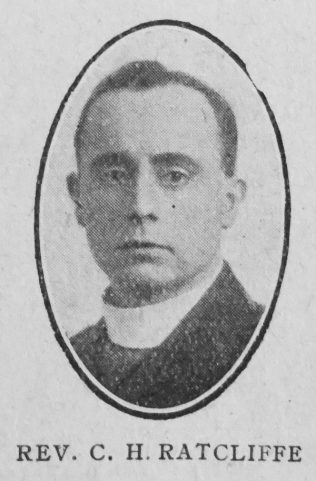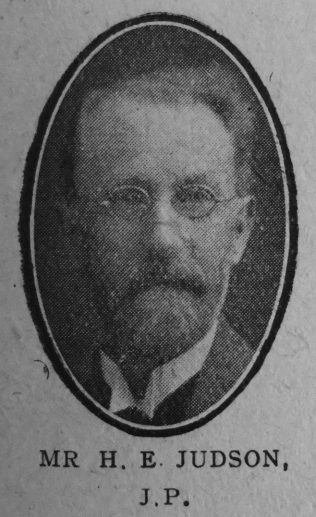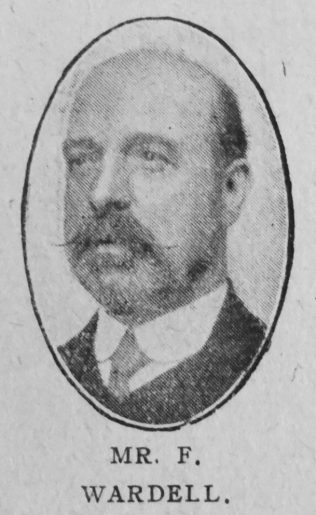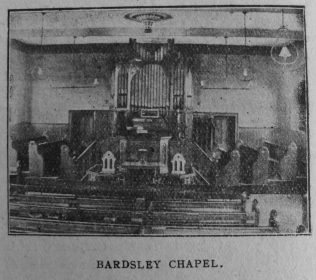Oldham: Lees Road Oldham Circuit, Lancashire






Transcription of Article in the Christian Messenger by Rev. T. Bullock
At a Joint Quarterly Meeting held in June, 1862, at the old Boardman Street Chapel, after attention had been paid to certain business which affected all the Oldham Societies alike, the resolution was passed that the two circuits should separate, and the matters connected with the Second Circuit should be considered in “the upper room.” In the atmosphere suggested by this phrase the circuit has sought, not without much success, to sustain a bracing and vigorous life. Thus outwardly took effect that for which Connexional sanction had been given, and henceforth Lees Road was to be the head of a Circuit which included also Lees, Bardsley, Waterhead, Hollinwood, Lower Moor and Delph. John Dumbell became its first Superintendent Minister, and James Travis, who had then been a year at Hollinwood, remained to continue a remarkably successful work as second minister.
It will be necessary to refer briefly to our beginnings in this busy centre, which now has four Circuits with eighteen churches and seven ministers. In 1820 the work, which had been begun in Manchester by missionaries from Tunstall, penetrated to Oldham, and in the true apostolic manner our church began in the House Meeting. A class was formed which consisted of Peter McDonald, Thomas Mannock, Joseph Riley, Robert Ashworth and James Wild. Some of these soon became leaders of other classes, and the cause prospered rapidly, It is, perhaps, in connection with the visit of John Verity on September 2nd, 1821, that we can best see how the work had spread from home to home. He says in his journal, “I preached in Oldham both afternoon and evening, and thousands crowded to hear the word of life in the open-air, and a life-giving word it proved.” In September, 1822, Oldham became the head of a circuit which covered a very wide area. Our first chapel was commonly known as “Ashworth’s Stable,” which name served as a reminder of the former use of the room after the fullest possible transformation had been made.
It is not surprising to find it recorded that preachers frequently referred to another stable to which the luminous finger of heaven directed men of old. It was abundantly proved that spiritual outpouring did not depend upon elaborate architecture; that the salvation of sinners did not wait upon costly ornamentation. The next place of worship, which was in Grosvenor Street, had been a machine shop, but in 1826, in the same street, a chapel was built. In 1839 this was succeeded by Boardman Street Chapel with its lower and upper rooms.
The Lees Road Society carries us back beyond 1830. Up to that time, however, it had not found a home, but had been “emptied from vessel to vessel, and not allowed to settle on its lees.” In 1830 the circuit experienced a great revival which led to the addition of more than two hundred members. Many of these were attached to the cause which had been moving from house to house in the vicinity of Lees Road, and nothing obtainable in the way of accommodation was now adequate to meet the needs. A room was therefore rented in Vineyard Street, and this was the home of the Society for a decade. In 1840 a more spacious room was taken at the comer of Lees Road and Cross Street, which formed the upper storey of a shop, and along with this a third-storey smaller room was obtained. Here the sheen of the Eternal was upon the countenance, the wealth of testimony was productive of the highest joy, and the sight of frequent conversions occasioned exercise for both voice and limb. It will be seen that the resolution of 1862, assigning the upper room to the new circuit, contained a term rich in hallowed association for those concerned. The housing of the Society seemed to make its progress by decades, as in 1850 a site was obtained in Lees Road, and Chapel and School were erected. The nether portion of the premises was let for dwellings until the increasing demands for school accommodation necessitated the addition of these rooms. The present chapel was built in 1864, only two years after the circuit division.
The circuit was formed, and the building of the larger church in Lees Road undertaken, in days of stress and strain. The American Civil War brought its pressure and privation to the home of the Lancashire cotton operative as to few other places, most of the cotton supply of the County being discontinued. The site had been obtained during the superintendency of Dr. William Antliff, but the project was thought impossible of accomplishment for a time in the midst of such commercial depression and hardship. An old report, however, tells us that “as the day of adversity still continued, we found it necessary to build the walls in troublous times.” It was carried through by the Rev. John Eastwood. The corner stone was laid by the Circuit Steward, Daniel Clegg. The spirit and sacrifice of the people were amazing. While North and South were at grips, and the Palatine outlook exceedingly gloomy, the people began and completed their new home, and with the shout of “Hallelujah!” opened its doors. The Lecture Hall, which stands at side of the chapel, was erected in 1903, as a generous gift of Mr. James Farrer, in memory of his wife and two daughters. The spirit of holy daring which possessed the early workers is still characteristic of their descendants, who lead a church which is passionate in its services and rejoices in a wealth of young life.
Lees society goes back to 1822. The Oldham missionaries soon gathered a sufficient number of people to arrange for regular services in the upper story of a dwelling-house. The place appears on the first Oldham Circuit Plan which was published in October of that year, and services were appointed for Sunday afternoon and evening and a week-night. By 1829 the cottage accommodation was outgrown, and a room which had been vacated by the New Connexion Methodists was rented. The first chapel was built in New Street in 1833 by the Rev. Sampson Turner. In 1861 a building fund was spontaneously started for a larger chapel. The Rev. W. Antliff had preached the Anniversary Sermons, and many people had failed to obtain admission, so a young man named Sutcliffe declared in the house of Daniel Barrett, “We must have a new chapel!” and, so saying, threw on the table the first coin. In 1866 the corner-stone of the present substantial building was laid. Bardsley also dates back to 1822, as in May of that year a great camp-meeting was held in a field of Fir Tree Farm. The preachers were from Manchester, and whilst in the morning one stand was sufficient, by the afternoon, it was said, about fourteen thousand people had gathered, and one stand was therefore quite inadequate. Many of those present had travelled a considerable distance, and, doubtless, many from the neighbourhood were attracted by the unusual form of service and the great heartiness of both song and speech. Several praying companies were also arranged. Such a high day, in a hitherto untouched district, was the promise of a new centre of activity, and a cause was soon established. The first chapel was built in 1832, and has served as a schoolroom since the larger one was erected in 1864.
When the circuit was made we had a very vigorous society at Waterhead. The missionaries went from Oldham, and some remarkably successful house-classes were commenced. Long after the cause had a home of its own these cottage meetings were continued, and the rich seasons of joy are still a glowing memory with those who are left to give counsel and encouragement. The present chapel was built in 1878, but the society has outgrown its accommodation, and looks to the days of peace that a forward movement may be possible. Albert Mount Chapel, which was built in 1903, is successor to the one in Lower Moor. In the latter district an early start was made. Prior to 1830 the name stood next to Grosvenor Street on the plan, and regular Sunday evening services were held. Though this cause has had to meet the wind and welter of hard days it has survived with a record of work and achievement of which it is justly proud. In 1910 an Institute was erected adjoining the chapel, which has also provided Primary accommodation. Copster Hill, the youngest of our societies, built its present home in 1882. Previous to that time the meetings were held in an upper room which was approached by means of an open stairway. The protection from inclemency of weather was not of the best, but a very robust cause was established. Many preachers retain precious memories of the pronounced evangelism of this society.
In 1869 the Rev. John Judson came to the circuit, and after a very successful term retired from active service, but remained in Oldham with his family, and the name has since become inseparable from the story of our Church in the town. His son, Mr. H.E. Judson, J.P., has been Circuit Steward of the Lees Road Circuit since the Hollinwood Circuit was formed from it in 1881 He has also reached his jubilee as a lay preacher. The Rev. W.D. Judson is another son. The circuit has also given to the ministry of our church the late Rev. John Leach, and the Revs. J.T. Stead, J.S. Buckley, and S. Buckley. Since he spent his probationary term on the circuit, the Rev. A. T. Guttery has kept up his association by an annual visit on the occasion of the Lees Road School Sermons.
Space forbids us to record the abundant and sacrificial labours of a host of gifted laymen – Mr. E. Rothwell has just passed to the higher life after serving our pulpits for fifty-seven years. Mr. T. Sanders, who succeeds to the position of Senior Lay Preacher, has well over fifty years service behind him. Amongst the four hundred names on our Roll of Honour are those of nine from our plan. Our present Society Stewards are: Lees Road, Councillor J.K. Cheetham; Lees, Mr. F. Wardell; Bardsley, Mr. S. Davis; Waterhead, Mr. J. Brooks; Albert Mount, Mr. J.W. Whiteley; Copster Hill, Mr. H. Schofield. We survey the past with deep gratitude; we discharge the tasks of the present with undaunted courage, and turn to the future with buoyant hope.
References
Christian Messenger 1918/104





Comments about this page
I have had bought into the Antiques Shop a Presentation Trowel . Presented to Mr.D. Clegg for laying of corner stone of the P.M. church and School, Lees Road. Dated 9th May 1864.
Please could you confirm that this is your church.
Would love to hear from you .
Add a comment about this page